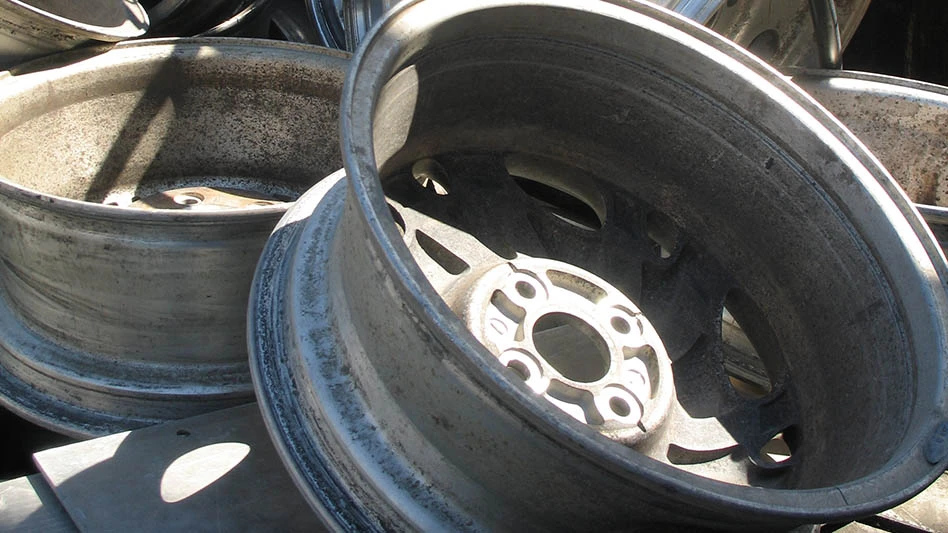Metro Waste Authority (MWA), Des Moines, Iowa, has put together a single-stream residential recycling program that it says lowers costs, reduces employee injuries, increases route and collection efficiencies and increases its landfill diversion rate.
In reviewing the process, decision-makers at MWA say some of the toughest choices required when transitioning to single-stream took place on the processing side: How to choose the optimal material recovery facility [MRF].
MWA, which bills itself as Iowa’s largest solid waste disposal agency, wrapped up the first year of its single-stream residential recycling program in 2010. The program, known as “Curb it! Recycle and Roll,” has resulted in significantly lower than national average contamination rates while increasing recycling tonnage, customer participation and satisfaction, the agency says.
WORKING THROUGH IT
“We’re surprised by our success after transitioning from multi-sort to single-stream,” says Tom Hadden, executive director of MWA. “Looking back, one of our most important decisions was choosing a strong, vertically integrated MRF, especially with the precipitous drop in recycling markets that coincided with our first-year single-stream rollout in August of 2009.”
Despite what MWA calls an exhaustive two-year planning process prior to its single-stream launch, even the best-laid plans couldn’t predict the largest economic downturn in recycling markets in more than a decade or other unforeseen barriers to implementing a new single-stream program.
“However,” says Hadden, “our comprehensive feasibility study did help us survive—and even, thrive—through the tough economic conditions by providing a road map to follow as we designed our RFPs (request for proposals) prior to selecting a new MRF and hauler. That made all the difference.”
In 2008, MWA sent out RFP requests for a new MRF. Two competing bids were received, though the agency was looking beyond the specific bid criteria, MWA’s leaders say.
“We also wanted a financially sound, committed partner who already possessed the marketing relationships with recycling product end users,” says Reo Menning, director of public affairs for MWA. “Additionally, we needed them to respond quickly to our community members and their residents’ concerns.”
Menning anticipated the need for an aggressive communication and education program for the task ahead. MWA would soon be faced with the customer service complexities of distributing 76,000 automated residential carts in two different sizes. This was to be done throughout MWA’s large service area, which covers 22 of what MWA calls “different profile member communities.”
Menning and her staff worked at breakneck speed with their public relations and advertising consultants, developing and implementing a series of outreach communications—advertising, brochures, direct mail, community newsletters, special events, phone helpline and Internet—to more than 140,000 residents before the single-stream launch date. Meanwhile, Hadden and the MWA board of directors worked through the RFP process.
| FIGURE 1 Overall Rank: 1 Proposer: Mid-America Annual Revenue: $1,380,203 Total Score: 97 Overall Rank: 2 Proposer: Firstar Fiber/Intl. Paper Annual Revenue: $1,214,070 Total Score: 83.65 |
A four-person review committee composed of MWA community members—elected city and county officials—scrutinized the bidders and chose Greenstar North America (then operating as Mid-America Recycling Co.).
The Mid-America/Greenstar proposal promised more revenue sharing per commodity to MWA and offered what the agency says it considered essential operations capabilities within all MWA member communities.
The two bids received and how they were scored or rated by MWA included the breakdown in the chart (Figure 1) .
CONSIDERABLE SCALE
Greenstar North America has one of the nation’s foremost profiles in terms of processing capability and global reach when it comes to marketing recyclables. Since entering the U.S. market, the Ireland-based firm has quickly carved out a place as a leading provider of post-consumer materials recycling, with more than a dozen processing facilities around the country. (See “Wearing of the Green” in the June 2008 edition of Recycling Today.)
The company’s extensive marketing service know-how and long-standing relationships with blue-chip companies—including Lowe’s, Bank of America, Office Max, Old Navy and Bed, Bath & Beyond—provide examples of Greenstar’s commodities expertise and its marketing muscle.
But Greenstar was required to make a multi-million dollar improvement at its Des Moines plant before it could be ready to provide a fully automated single-stream facility that accepted, processed, stored, transported and marketed metro Des Moines’ recyclables.
Once installed, the new equipment would transform a system that formerly relied on considerable hand sorting and a processing rate of 2 to 3 tons per hour into a fully automated system that could handle a flow of single-stream material at the rate of 15 tons per hour.
After the MRF was fully operational, Kelley McReynolds, Greenstar’s general manager in Des Moines, reported volumes of recyclables had increased by up to 30 percent in the first few months. This volume increase eventually settled to around 20 percent or better throughout the year, with 3 to 4 percent contamination rates.
This contamination rate was considered far lower than what occurs at many other first-year single-stream programs, when contamination can skyrocket to 15 percent or higher.
McReynolds gives much of the credit for the low contamination rate to MWA’s effective communications efforts, which he says, allowed Greenstar to continue producing and marketing high-quality recyclable products to its long-term customer base, which trusted the company’s material quality.
“You have to remember,” says Hadden, “Greenstar’s relationship with the commodity markets and end users allowed us to continue single-stream with confidence, knowing that we were part of a global economic downturn that will eventually pass.”
Beyond the low contamination rates, MWA also experienced its biggest increase in recycling tonnage since it began its multi-sort recycling program 16 years ago. During the first year after single-stream was introduced, MWA says a total of 26,000 tons collected across the metro area diverted more than 5,000 garbage truck loads from the landfill.
COLLECT CALLS
Choosing a new hauler and a cart supplier also were significant decisions for MWA. Another set of RFPs helped MWA makes its choices.
The purchase of 76,000 carts, financed through a seven-year loan, was MWA’s largest expenditure for the new program. The agency settled on a combination of larger 96-gallon carts and smaller 48-gallon models. The carts are owned by MWA, and each resident can choose which size to use based on his or her preference.
“Offering two cart sizes increased participation and customer satisfaction,” says Menning.
The collection companies were required to submit costs for bi-weekly and weekly collection; to collect two different size carts; to calculate percentage cost-based annual increases (for fuel and non-fuel); and to submit a bid for a seven-year contract term with the option of three-year renewals.
| FIGURE 2 Overall Rank: 1 Proposer: Waste Management $/household/month: $2.39 Total Score: 86.2 Overall Rank: 2 Proposer: Artistic Waste $/household/month: $2.94 Total Score: 73.1 Overall Rank: 3 Proposer: Ankeny Waste $/household/month: $2.03 Total Score: 72.3 |
The chart (Figure 2) shows the MWA review committee’s ranking of three proposals received.
Waste Management Inc., Houston, one of the nation’s largest collection service providers, won the contract. Subsequently, Hadden says his community members are pleased with the first-year single-stream cost reduction in collection fees.
With a comparatively low contamination rate for a first-year single-stream introduction, an overall participation rate increase of 72 percent and growing customer satisfaction, MWA says it has been pleased with the successful beginning to its single-stream program—even after the challenges of riding out an 85 percent drop in secondary commodities pricing in late 2008 and early 2009.
Not content with its current contamination rate or participation numbers, MWA says it plans to step up its communication efforts to residents, reminding them once again “what’s acceptable and not” in their recycling carts.
“Communication doesn’t stop after a year,” says Menning. “In fact, we’re just beginning and we’ll continue developing even better messaging that motivates and educates our residents to the benefits of single-stream and how to practice it more effectively.”
At the same time, Hadden says he is looking beyond the residential market.
“With the unused capacity at Greenstar’s new MRF in Des Moines, we are starting to work with hospitals, hotels, schools and businesses of all sizes to expand and improve their environmental practices by going single stream,” he says of MWA’s approach to the commercial and institutional sectors.
There are a multitude of major decisions facing a community or solid waste agency before it makes major changes to its recycling practices. These considerations encompass communications to carts to collectors.
As for Hadden and his city partners in Des Moines, they say choosing the right MRF was critical to their success.
This article was submitted on behalf of the Des Moines, Iowa, Metro Waste Authority (MWA). More information on the MWA is available at www.mwatoday.com.

Explore the February 2011 Issue
Check out more from this issue and find your next story to read.
Latest from Recycling Today
- RMDAS April figures show recycled steel price setback
- Steer World offers PEX plastic recycling machine
- New recycling grant program launches in Massachusetts
- Tire Recycling Foundation names executive director
- Dock 7 named 2025 Exporter of the Year at New Jersey International Trade Awards
- Waste Connections reports ‘better than expected’ Q1 results
- Commentary: How EPR is transforming the packaging industry
- Acerinox names new North American Stainless CEO





